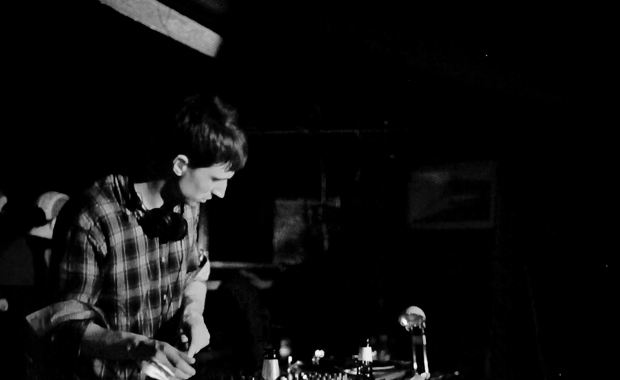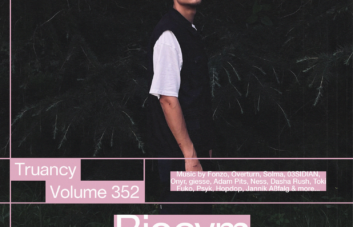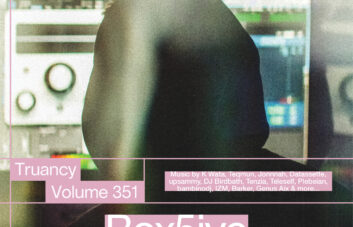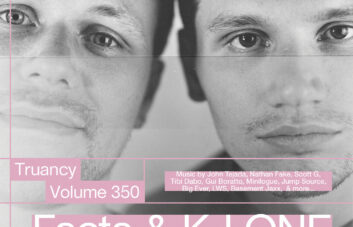The classification barriers in contemporary club music have been blurred for quite some time now and you’ll be hard pressed to find a prolific dubstep producer who hasn’t made at least one foray into the timeless 4 x 4 template, some even dedicating their whole studio time to this end. On the other hand, you have some of house and techno’s finest exports exploring the finery of dubstep, who have indeed managed to do more than enough justice to the sound. The process to get to where we stand today is certainly a long one, but it is arguably the DJs who bridged the first gaps. One name who emerged from the dubstep scene to open it up to this diversity and discussion to become one of the most eminent taste makers around is undoubtedly London based DJ and producer Braiden. His sets, personal mixes and radio shows on SUB.FM and now Rinse have constantly pushed the best sounds in either area, merging both into cohesive movement with the emphasis on good music never allowing himself to be restricted to a certain genre. His rise was aided by a stint in the Red Bull Music Academy that helped garner much more attention onto his craft in 2010, not long after the brilliant “The Alps” and it’s sole remix by Kassem Mosse was released to Joy O’s Doldrums imprint and underlined the talent and expectation that still lingers today. Yet it’s nearly been a year since the release of the unassuming Doldrums 12”, marked only with DLDRMS003 and the iconic lobster so the apprehension of what’s on the horizon concerning the man’s much anticipated productions is approaching. We caught up with the man himself to see how he’s been, what work is in the pipeline, general musings on music, and last but not least his photography.
Braiden – The Alps – Broadcast on the Mary Anne Hobbs show by braiden
Hey, how have you been? “I have been great, thank you. Mostly dividing my time between finishing these long awaited new tracks and riding my bike around recklessly.” How’s the new EP coming along, can you shed any light on it? “Yes, I’ve got a 12″ forthcoming on Aus Music which should be my next release and I just wrote a new track which will most likely go on another release, still finalizing all of this right now.” And are there any other projects in the pipeline? “I just finished a remix for SBTRKT’s next single named Pharaohs, which should be out soon.”
Do you find you need to be in a certain mind state when making tracks? “Sure, as with any other creative process I find. I don’t force it too much, sometimes its more beneficial to use my time to gather inspiration and experiences rather than sit on the sequencer as a nine to five job and force a new tune a day.” Do you enjoy creative process of taking the time out for true ideas to form, or do you actively pursue solutions? “Yes, as this usually involves going to see new DJs, visiting record shops and hearing new sounds, what’s not to enjoy! As a music producer it is easy to get stuck in a routine and lose your initial inspiration, I just do what I need to make sure that doesn’t happen.”
Do you ever take inspiration from other sources such as art and bring them to your productions ? Whether you manage to take a feeling or emotion from pieces, or forms in some cases. “Maybe subconsciously, but it’s never something I particularly aim for. Sometimes the abstract nature of music can relate to more non-representative art forms for me certainly, but its not usually in the front of my mind when I make music.”
Are there any particular landmarks in your musical history that stick out vividly in your mind if you were to look back? Such as particular records you bought, or gigs you played that really stand out to you. “It’s hard to say, as I feel I’m being constantly influenced by an amalgamation of things as I go on, rather than seeing a DJ when I was young and deciding that’s what I want to do. I can tell you that some of my most memorable gigs were the first time I played at FWD back in 2007 and Sonar last year, but I’m not sure how much these singular events really shaped my approach. There are so many things that influence me that go back to before I even started DJ’ing and other things that don’t have anything to do with music at all, really.”
How do you feel your sets have developed over time? “They’ve become more musically and structurally varied, yeah. When I started DJing my sets would really focus in on one sound, and when I first started playing on radio and clubs this one sound was dubstep. Even though I wouldn’t play them, I was collecting the odd house and techno records along with electro which I listened to before I started going to clubs at all. On radio I started playing these different genres of music but still working them in to my existing sound. This kept developing until I was really playing across the board. However, even in my more eclectic sets I would always attempt to keep a solid structure and flow throughout. There’s a fine line in the eclectic approach between keeping things varied and interesting, to just sounding like a random jukebox without building any atmosphere or flow. Recently I’ve enjoyed playing and listening to sets which are once again more focused.” Your sets seem to move more towards house and techno oriented music and move further away from dubstep and sounds that were more of a permanent fixture before. “My sets are certainly more techno and house orientated these days and are less focused on the “UK bass” or whatever scene. But this isn’t a measured decision or reaction to anything. Tunes come in and out of my sets depending on what I’m feeling and what I feel would make up the ideal kind of set I’d like to hear myself. Looking at what I play now compared to a couple of years ago, it is more house and techno orientated for sure. It just happens that these are the tunes I’m really feeling at the moment, more so than a large majority of dubs I get sent from UK producers, so that’s what’s been getting played.”
Lets talk about a couple of artists/tracks we think you’ll be familiar with.
Loefah & Skream – 28 Grams (Tectonic, 2005)
“I know this one, this was around the time I was getting into dubstep. I know a majority of the tunes from that period remind me of a weed smoke filled Plastic People, and Youngsta playing some real dark intense music whilst everyone got the fear.”What other tracks tunes give you nostalgic vibes of this time? ““0800 Dub” by Skream and “Tapped” by him as well, those are great. “Shangooli” by Scratchy, “9samurai” by Kode9, most of the stuff from around 2005-2006, really.”
Any particular memories that really stand out from 05-06 that you could share with us? “I’d say Kode9’s set at the last time FWD was on a Thursday before it moved to a Friday. This must have been back in 2006. He played a great set that weaved through a lot of styles, I can remember many of the tunes now. He started off with “Fisherman” by The Congo’s and ended up playing tracks like “Jah War” by The Bug with Flowdan, which was probably the first time it was played at FWD. His mixing was never the tightest, but he really brought his own eclectic vibe compared to a lot of dubstep DJ’s who at the time mainly played a very specific sound.”
Yeah that’s something I get from Kode9, I hang on every track choice. What is it about him that makes him such a strong figure in music for you? “I think what brought about his standing in that scene, and you can apply to this to other respected artists too, is that he had a well-defined taste in music and was not afraid to play that out, whatever it was. Sometimes this made it difficult for him, I remember him telling me about playing to crowds that were just expecting dubstep, but still he took risks and pushed what he believed in. It’s refreshing when you see this in an artist, and they can really pull it off. This is the kind of mindset that leads to timeless music, rather than disposable hits.”
The Egyptian Lover – I Cry Night After Night (Egyptian Empire Records, 1984)
“Is this Egyptian Lover on a comedown after one of his cocaine fueled nights surrounded by b-boys and sexy girls?” It must be, you can feel his pain in the guitar solo. “Poor Egyptian Lover! All he wants to do is party. Who is the wench breaking his heart? I’ll show her what for. Great tune though yeah, love the twinkly synth sounds. He’s got a new album coming out.” Really? I did not know about this. “I saw him in London a couple of years back. I just remember him walking through the crowd to get to the decks, this huge guy decked out all in black with sunglasses in the club, he couldn’t walk a metre without someone grabbing him for a photo, such an iconic look.” How was it ? “It was a lot of fun, you can imagine. He did a two hours set, first hour just mixing records, doing his scratching and whatnot. Then he bust out the 808, playing in parts live and got on the microphone for the 2nd hour.” Also, he doesn’t look like he’s aged much either.. “Of course! Black don’t crack. It also helps he looked about fourty years old back in the eighties, I guess.” What are his key releases for you? “Freak-A-Holic definitely, especially for the video.”
On the other side of the booth, are there any other particular DJs you really enjoy going to see and get excited by? “There are a few, I’d say the most recently would be when I saw Dixon for the first time the other week. I was impressed by not only his completely seamless mixing but also his ability to program a set that kept enough variety and always maintained energy and control of the dance floor for four hours. Others sets I’ve enjoyed recently would include DJ’s like Gadi Mizrahi, DJ Rashad, Benji B and Seth Troxler to name a few.”
Do you feel the concept of a DJ has changed? “I think in recent times the focus has shifted from DJs who can really build a set and maintain a dance floor, to producers with big tunes out who then get booked to DJ regardless of their ability behind the decks. But it’s an unavoidable situation – when a producer has tunes out with hype, people want to see them DJ regardless, and if people want to see them then promoters will book them.”
Does that put pressure on a performance and heighten the expectations of the crowd if there are certain decisions that are predetermined by hype? “It’s never really been an issue to me, but I think it becomes a bigger issue once you have released hits on a mainstream scale and you are playing to huge audiences. That’s when people only want to hear your big hit. But I think when people step up behind the decks they should DJ, that is they should play both what they want and what they think will work best for the situation; and if that doesn’t include their latest big hit then so be it. If you really get the crowd going and create a great vibe then few will complain.”

Where does your love of photography come from and how has it developed (no pun)? “I got into photography around the age of nineteen, I think. I always wanted to use the camera to create and capture certain moods, often from the aesthetic alone, with an emphasis on bold composition and light. It’s interesting as I knew nothing about photography back then but this still sticks with me to this day.” There is a duality within photography where you can have complete control to create and/or stand back and capture the moods like you say. Do you think you’ve moved towards either or strands of photography? “Yes, I have always been in line with the former. It’s a combination of how important aesthetics are in my work, and the way I enjoy a considered approach to making photographs.”
Are you continuing with your photography at the moment as well? “Yes, I’m still working on projects now and again.” What sort? “I did a shoot with L-Vis 1990 for his new single and album; working on ideas for a shoot with Mickey Pearce now too.” Has there been a shift towards producing cover art on a more regular basis? “I’ve done it before, most recently with Bok Bok in doing the cover for Girl Unit’s “Wut” EP. It’s something I enjoy and am open to doing, but not something I’m necessarily pursuing.”
A lot of your recent photography focuses upon portraiture, does it differ greatly when you take photos of places and other subjects? “The way I approach a portrait can differ greatly from shoot to shoot depending on what I want to capture. Some shoots will be very natural and fluid, outside in natural light in conversation. Others may be meticulously lit and planned. The main difference with shooting people compared to objects and places is how I interact and direct subjects as they are shot, but again this differs depending on the aim of the shoot.” Is there anyone in-particular you would most like to take a portrait of? “Not particularly. Most of my photographic ambitions as I mentioned before are self indulgent ones. Like, I have certain images, scenarios, moods in my head that I want to create, but there’s no certain people I particularly want to chase down and do a shoot with.”
With the amount of portraits that focus on DJs and producers, do you feel like you’re documenting your peers and the scene to some extent? “Oh no, I don’t see it that way at all. The only documentation going on here is of the sorts of visuals and aesthetics that interest me. I guess there’s always some form of documentation in the photographic medium, but my focus tends to be on creating images I find visually appealing. I’m quite self indulgent in that respect, I’ve never been much of a documentary photographer as such.” When you take photographs of your contemporaries do you ever use your knowledge or understanding of music in the process? “Not really, no. I suppose the music attributed to the subject can influence the photograph (although sometimes purposefully it doesn’t), that would be due to the feeling I get from the music, rather than any kind of intellectual “knowledge” of music.”
Are there certain photographers you admire and appreciate? “Of course yes, a few of my favourites would be Uta Barth, Philip Lorca-DiCorcia, Rinko Kawauchi, Thomas Demand and Steve Hiett to name just a few.”
How do you balance the music and photography together or do they coincide quite easily? “Visual art and music for me are quite different processes so they don’t consciously influence each other. I just choose to do whichever I feel inspired to do, I don’t pressure myself to balance anything.”
Yet it’s that patience Braiden possesses, to wait and let inspiration take its course which allows him create pieces that stand out as some of the strongest and most forthright that have been seen for a long time. In a sea of releases by the same old faces that seem to steadily slope into mediocrity, Braiden’s output or lack thereof cuts a sharp contrast. As luck has it, he played his new material on his Rinse show while this interview was being transcribed, and of course it was ripped and was placed on YouTube within minutes. You can listen to the utterly brilliant version of his new track “The Belfry Tower” here and his SBTRKT remix here.
Tune into Braiden’s Rinse show every first & third Tuesdays of each Month 1300—1500 GMT.





1 thought on “Interview: Braiden”
Comments are closed.